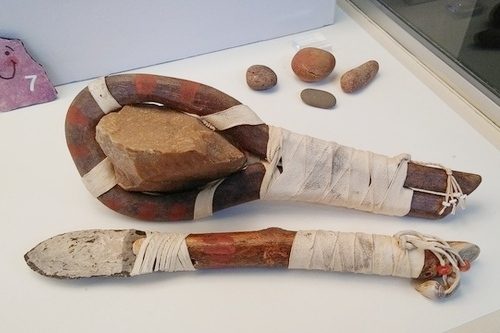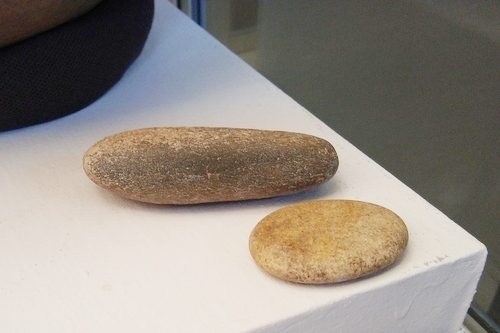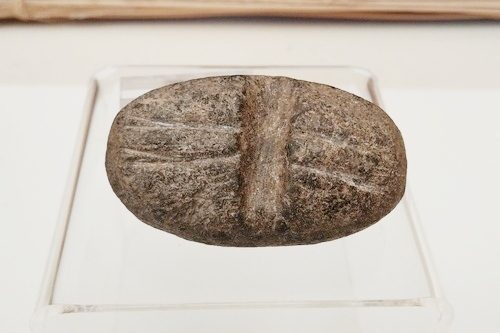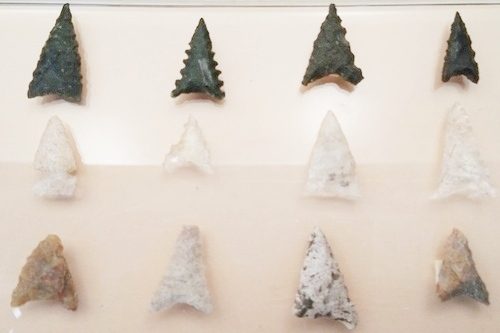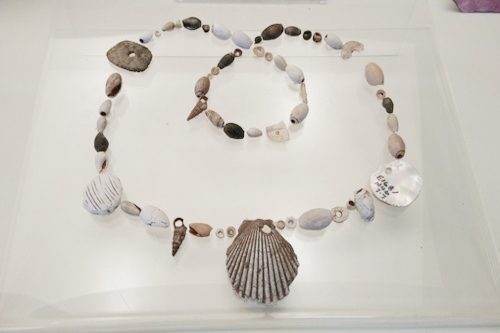Artifact of the Week: Hand Chopper and Knife
Many of the stone tools would have had handles made of wood or bone. However, these materials do not last over time. These modern handles were recreated based on historical information. Only a small portion of history is preserved in…
Artifact of the Week: Polishing Stones
Pottery first appears in the archaeological record during the Late Holocene. The people of the Late Prehistoric Tradition made pots to store water, foodstuffs, and personal items. The pottery was created with the coiling technique, and the polishing stones were…
Artifact of the Week: Cooking Stone
Cooking stones were heated in embers and then placed into pots with a stick inserted into the hole. The heat would cook the food in the pot. The people of the Late Prehistoric Tradition did not have (nor need) the…
Artifact of the Week: Shaft Straightener
The shaft straightener was used to gently bend prepared and heated wooden sticks to create an arrow shaft that would fly true. It is a flattened round stone with a groove pecked in the flat surface. To create that groove,…
Artifact of the Week: Arrow Points
Bow and arrow technology were introduced to the region during the Late Holocene. During this period, the people of the Late Prehistoric Tradition hunted small game with the bow and arrow. Almost all archaeological theories about San Diego’s early history…
Artifact of the Week: Beads and Pendants
Throughout history, humans have adorned themselves. These beads came from archaeological sites all over San Diego. The shell beads are made of olivella, abalone, clam, scallop, and dentalia. The grooved stone bead is made of steatite. During the Late Prehistoric…
